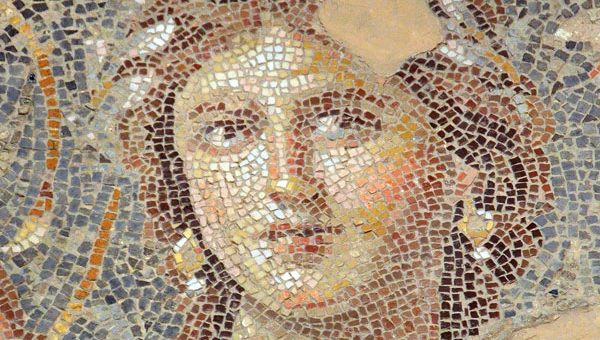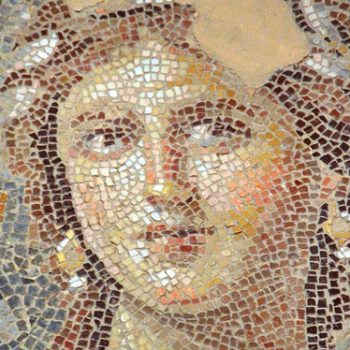
Where Can I Find Mosaics in Israel?
is a question our clients ask when we plan their trip to Israel. Mosaics shed a light on history and tell stories about people, their homes, how they lived their lives – if you know how to read them. So where can I find mosaics in Israel? The answer is: just about everywhere!
Ancient Roman mosaics, Beit Shean, Israel
Archaeological finds are underfoot in towns and villages all across Israel. So where can I find mosaics in Israel? A common occurrence is for a building contractor to find evidence of an ancient civilization on the site of a proposed building. By Israeli law, such archaeological evidence must be reported to the Israel Antiquities Authority, and of course, construction work must be halted immediately.
Such was the case in the central Israel city of Lod (Lydda). Not far from Ben Gurion Airport, Lod is a working class city with a mixed Arab and Jewish population. It is also the home of a high tech and industry park.

Translation: Archaeological Dig
In the early 1990s, a construction crew began work on a highway. As their heavy machinery dug deep into the earth, evidence of ancient history met with the power shovels: a magnificent mosaic floor, intact and unharmed, was unearthed. The mosaics were world-class and deserved to be seen by a large public. For the last 20 years, the Lod Mosaic has been traveling around the world – perhaps to your city as well. To date, the Lod Mosaic has been on display at the Hermitage in St. Petersburg, Metropolitan Museum of Art in New York, Musée de Louvre in Paris, San Francisco, Philadelphia, Venice.… But ultimately, the Lod Mosaic will come back to Israel – and to the city of Lod in particular.
Where Can I Find Mosaics in Israel?

Mosaic Floor at Lod, Israel
Not a tourist destination, the city of Lod does not have any museum facilities to properly house the Lod Mosaic. So a plan was drawn up to build a new museum in Lod and attract local and foreign tourists to the city. Construction on the new museum started in 2016. Once again, heavy machinery dug deep into the earth.
So where can I find mosaics in Israel? And once again, surprise, history popped out of the ground: another mosaic floor – more magnificent than the previous one from 20 years ago. An examination of the mosaic tiles dating to the Byzantine period, revealed excellent workmanship – a sure sign that craftsmen from Tunisia and Libya had created each mosaic stone. Detailed pictures of ships and fish helped researchers conclude the floor had been located in the villa of a wealthy shipping merchant. Further depictions of olive oil, wine casks revealed a lavish lifestyle.
Israelis are interested in “new” archaeological findings and like to get a first hand look as soon as possible – kind of a badge of honor. On the day I visited the site in Lod, three days after it was announced, there was a constant and steady group of visitors coming to see. Representatives of the Israel Antiquities Authority were on hand to explain, show and answer questions at the impromptu outdoor museum. Neighborhood children had walked over with their teacher to learn of the hidden treasures in their city.


